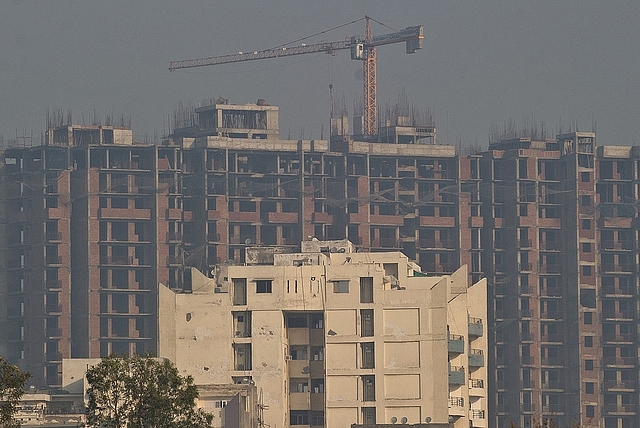
How UPA’s Land Acquisition Law Is Making Both Infra And Jobs Growth Unviable
We have to roll back the Land Acquisition Act and focus on basics such as:
#1 Improving land records, so that titles are clear;
#2 Restoring the right to property as a fundamental right so that no acquisition is unfair;
#3 Establishing a true market price by reducing transaction costs (especially stamp duties) so that the prices reported are closer to real transacted prices
#4 Abolishing the automatic price escalator of acquisitions at four times market price in rural areas and two times in urban areas.
The UPA-enacted Land Acquisition Act has begun to do serious economic damage. It is raising costs all over, and possibly inhibiting the creation of jobs in precisely the areas where jobs can be created fastest: infrastructure and construction, both of which need land as a basic input.
According to an Economic Times report yesterday (28 March), land acquisition costs for expanding the highway network have gone up by a hefty 65 percent in just one year - between 2014-15 and 2015-16. A hectare now costs an average Rs 2.22 crore compared to Rs 1.35 crore last year. And since it takes around one-and-a-half hectares to build one km of a four-lane highway, land costs now constitute nearly 40 percent of the actual cost of building a road, ET says.
A 65 percent spike in land costs has serious implications for the viability of both infrastructure investment and growth - especially jobs. This rise is due to the foolish requirement of UPA’s law which mandates payment of four times the market price for land acquired in rural areas and two times in urban areas, where land prices are already very high.
The positive implications of the law are few while the negative ones many.
The main gain is that more people may be willing to give up their land since prices seem favourable. Putting more money in rural hands - at least in those areas that are fortunate enough to be where highways are to be built - means rural distress is being addressed and people are being taken off the land that may yield better returns when sold.
But consider the negatives:
First, infrastructure is becoming unviable. Once a higher base is established for land prices, it will automatically escalate land prices in the vicinity and in other places and make future increases inevitable. As these prices feed into the system, paying four times a rising market price will make infrastructure prohibitively expensive.
Just consider the math. If prices rise at 65 percent for two more years, each hectare of land will cost Rs 6 crore. Even at a more moderate pace of 35 percent annual growth, the land will cost Rs 4 crore a hectare (one hectare is 2.41 acres) in 2017-18. NDA will be unelectable if infrastructure investment grinds to a slow march a year before general elections.
Second, the Land Acquisition Act is creating long-term damage by mandating a price that will not only escalate, but will do so without actually establishing the actual market for land. It is well known that land prices are artificially suppressed in order to avoid transaction costs and taxes. But with an incentive like four times escalation on acquisition, the incentives may change and soon acquisition costs may bear no connection to actual market prices. Let’s also remember, any acquisition increases the value of land nearby, as road connectivity improves economic activity. We may thus reach a situation where price expectations are too high for any acquisition to be viable.
Third, since land parcels tend to get bought by middlemen and big landowners from marginal farmers well before an actual acquisition happens, the benefits may go more to the big vested interests rather than the poor farmer in whose name the Act was legislated. Not only that, corruption will increase as acquisition procedures under the act are dilatory, and there will be incentives to rig recorded “market prices.”
We ae heading for a situation where both infrastructure and growth will end up becoming gridlocked in a rising tide of land price escalation expectations. Farmers with unviable land prices will sell their land to middlemen at low prices, but this land won’t get bought as infrastructure will become too expensive to finance from tolls and user charges.
We have to roll back the Land Acquisition Act and focus on basics.
These are: improving land records, so that titles are clear; restoring the right to property as a fundamental right so that no acquisition is unfair; establish a true market price by reducing transaction costs (especially stamp duties) so that the prices reported are closer to real transacted prices, and - most important - abolish the automatic price escalator of acquisitions at four times market price in rural areas and two times in urban areas. If a true market is established, people will sell even at a 20-25 percent premium to market prices. I know I would sell my old house if I got that kind of premium.
We need transparency in land use norms so that the actual landowner benefits from high prices. Right now the benefits are captured entirely by vested interests, who know which land is going to be notified and which one isn’t.
We need deep changes in the Land Acquisition Act and not retrograde ones like the one mandated by the UPA. The UPA destroyed the land market and the prospects of faster growth with its law.